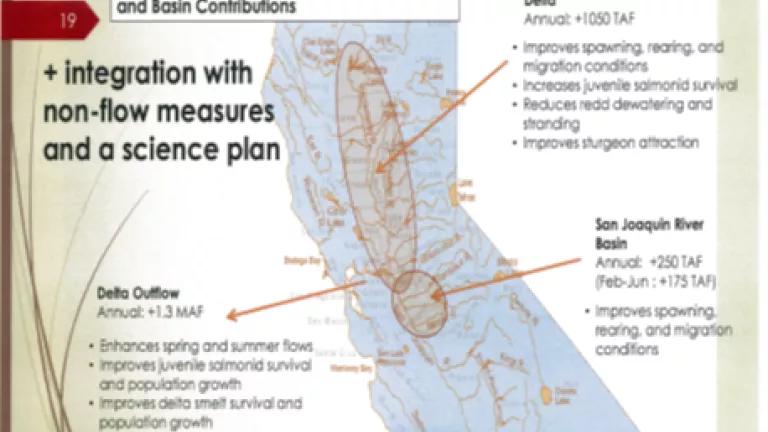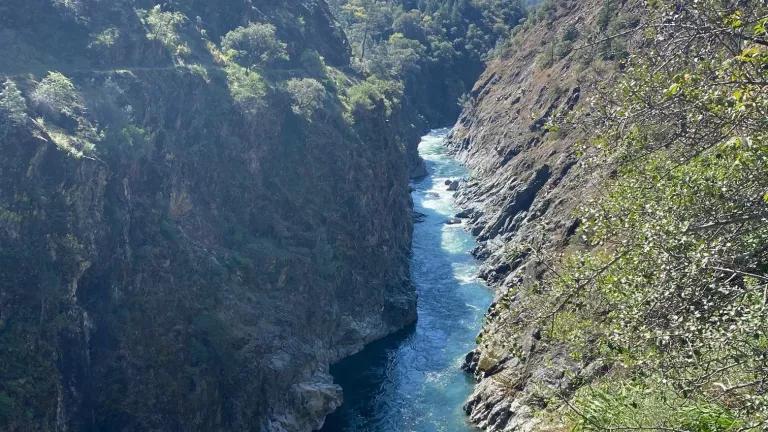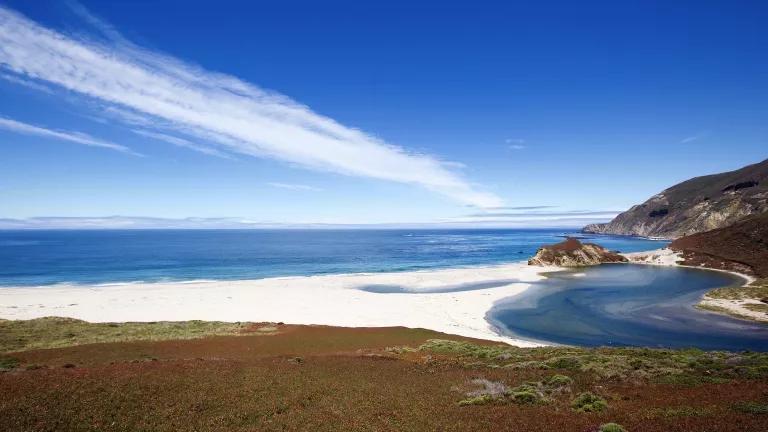Honey, the VAs Shrunk the Delta Flows
Since the State Water Resources Control Board began its public process to update the Bay-Delta Water Quality Control Plan in 2008, the amount of water proposed for the Bay-Delta environment has continuously shrunk.

Since the State Water Resources Control Board began its public process to update the Bay-Delta Water Quality Control Plan in 2008, the amount of water proposed for the Bay-Delta environment has continuously shrunk due to political pressure from those who profit from the destruction of the Delta. While the proponents of the voluntary agreements have not provided any modeling of the latest proposal, preliminary analysis shows that the 2022 proposed voluntary agreement would provide an annual average of less than 500,000 acre feet of additional winter-spring outflow compared to the rules in place from 2009 to 2019 (before the Trump Administration gutted environmental protections in the Bay-Delta). That’s less than half of the 1.3 million acre feet of additional outflow included in the State’s 2017 proposed voluntary agreement, and it appears to be about one quarter of the water for the environment that the State Water Resources Control Board has identified in its proposals for and adopted amendments to the Bay-Delta Plan.
In July 2018, the State Water Board released its Framework for completing the update of the Bay-Delta Plan, which proposed reducing water diversions from the Sacramento Basin by 2 million acre feet per year on average, in order to restore the health of the Bay-Delta. Of that total amount, approximately 1.3 to 1.5 million acre feet was additional outflow in the winter and spring, and 500,000 to 700,000 acre feet to improve upstream reservoir storage and water temperature management and strengthen water quality objectives in the summer and fall. In December 2018, the Board finally adopted amendments to the Bay-Delta Plan establishing instream flow and water quality requirements for the Stanislaus, Tuolumne, and Merced Rivers, requiring 40 percent of unimpaired flows to remain instream in the winter and spring. Flow from these San Joaquin tributaries would provide substantial additional Delta outflow to what was identified in the 2018 Framework. Even so, together these proposed and adopted amendments to the Bay-Delta Plan proposed significantly less water for the environment than state agencies and independent scientists had concluded was necessary to meet the State’s salmon doubling objective in these rivers, and far less water than the State Water Board concluded was necessary to fully protect the Public Trust in 2010.
Yet behind the scenes, the Resources Agency was already proposing for far less water for the environment. In 2017, the California Department of Fish and Wildlife identified an annual average of 1.3 million acre feet of additional Delta outflow (above and beyond Delta outflow under the rules in effect at the time, including the 2008 and 2009 biological opinions).
However, this was significantly less water for the environment than the State Water Board’s regulatory proposals and requirements because it: (1) included flow from both the Sacramento and San Joaquin Basins; (2) was not limited to flows in the winter-spring months, but included flows in the summer and fall; and (3) did not address upstream reservoir storage and temperature management.
But water users refused to go along, so by 2020, the State was asking for even less water for the environment as part of voluntary agreements. Instead of 1.3 million acre feet per year on average that CDFW proposed in 2017, in 2020 the Resources Agency proposed an average annual increase in Delta outflow of just over 750,000 acre feet per year (more than that in Dry, Below Normal, and Above Normal years, and far less than that in Critically Dry and Wet years):

Like the 2017 VA proposal and the State Water Board’s July 2018 Framework, the 2020 voluntary agreement proposed to add this water to the flows that were occurring under the 2008/2009 biological opinions. (It’s also not clear that the water from the exporters in the table above was actually additional Delta outflow compared to that baseline, in which case the total proposal would increase outflow by closer to 600,000 acre feet per year).
Yet even that was too much for the water districts. So the State once again shrank the volume of flows proposed for the environment in the March 2022 proposed voluntary agreement (see the last line of the table below):

Not only is this a lot less water on its face, but even worse, the March 2022 voluntary agreement is framed around the Trump Administration’s blatantly unlawful biological opinions for the Delta. These biological opinions – which are being replaced as a result of litigation by fishing and environmental groups as well as the state of California – gutted protections for salmon and endangered species, resulting in significantly increased water exports from the Delta and reduced flows through the Delta, as the modeling below from the U.S. Bureau of Reclamation shows:

Because the March 2022 voluntary agreement proposes to add water to the Trump BiOps, this new baseline means there is even less water for the environment when compared with the prior VA proposals, which used the 2008/2009 biological opinions as the baseline:
|
Preliminary Analysis: VA proposed Delta outflow compared to 2008/2009 BiOps |
|
| Wet | -71,903 |
| AN | 723,174 |
| BN | 713,830 |
| Dry | 540,076 |
| Critically Dry | -73,047 |
As a result it appears that the 2022 VA would result in less than 500,000 acre feet per year on average of increased in Delta outflow compared to Trump Administration's biological opinions (495,875 acre feet), approximately 300,000 acre feet per year on average compared to the rules in place from 2008 to 2019 (307,446 acre feet), and would result in less water for the environment in critical years and wet years than what occurred under those rules. That’s less than half of the flows proposed in the 2017 voluntary agreement and appears to be close to 25 percent of what the State Water Board has proposed and required.
Using the Trump BiOps as the baseline also raises the big question of what would be the rules under the VA: would the VA use the unlawful Trump BiOp’s rules governing CVP and SWP pumping in the Delta, reservoir storage and water temperature, or other requirements?
Similarly, it appears that under the March 2022 VA, water exports from the Delta would increase; while the 2020 VA proposes that the exporters “contribute” 200-300 thousand acre feet to maintain spring outflow under the 2008/2009 BiOps, the 2022 VA proposes that they contribute 125-175 thousand acre feet (and again, exports from the Delta increased by several hundred thousand acre feet a year under the Trump BiOps as a result of reduced Delta outflow in the spring as well as in the fall months). No wonder Westlands and the State Water Contractors are cheering for this proposal.
Overall, it appears that from 2017 to 2022, the amount of water for the environment in the State’s proposed voluntary agreement has dramatically shrunk, from 1.3 million acre feet per year on average to less than 500,000 acre feet per year on average. And of course, the initial 2017 VA proposal was already far less water compared to the State Water Resources Control Board’s 2018 Framework and the amendments to the Bay-Delta Plan adopted in 2018 for the San Joaquin Basin, let alone compared to the State Water Board’s 2010 Public Trust flows report.
And while the 2022 VA assumes water from the San Joaquin Basin, there are no water districts from the San Joaquin Basin that signed this MOU (and it proposes dramatically less water than required by the 2018 Amendments to the Bay-Delta Plan). In my next blog, we’ll cover that problem and some other fatal flaws in this proposed voluntary agreement.
Like the 1989 movie Honey I Shrunk the Kids, the ever-shrinking amount of environmental flows that the State is willing to accept as part of a voluntary agreement guarantees that the outcome of this proposed deal will be a farcical parody of what is needed to restore and sustain the health of the Bay-Delta, its native fish and wildlife, and the jobs and communities that depend on its health.



